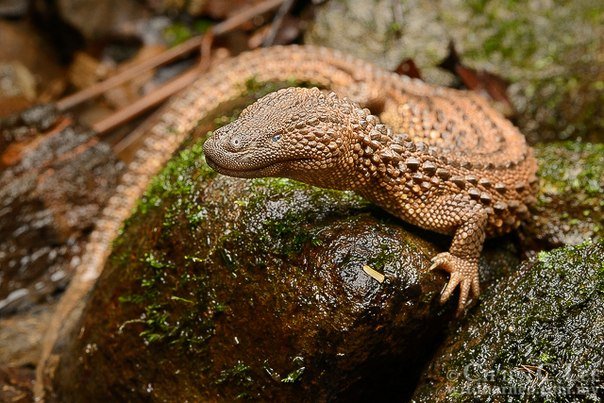
Meet the elusive earless monitor lizard. With its distinctive features and mysterious allure, this remarkable reptile often leaves enthusiasts captivated and curious. Found in remote regions of Asia, this lesser-known species has piqued the interest of herpetologists and nature lovers alike. What sets the earless monitor lizard apart is not just its unique physical characteristics, but also its elusive nature, making sightings a rare and special treat for those lucky enough to spot one in the wild. Join us as we delve deeper into the fascinating world of the earless monitor lizard.
The Fascinating World of the Earless Monitor Lizard
What is an Earless Monitor Lizard?
Welcome to the exciting world of the earless monitor lizard! These unique creatures are a remarkable species of lizards known for their distinctive features and intriguing behaviors. Let’s delve into the details of what makes the earless monitor lizard so special.
Physical Characteristics
The earless monitor lizard, scientifically known as Lanthanotus borneensis, is a rare and mysterious lizard species found in the rainforests of Borneo. One of the most striking features of these lizards is their lack of external ears, which sets them apart from other members of the monitor lizard family.
Measuring around 12 to 15 inches in length, the earless monitor lizard has a slender body with smooth, shiny scales that range in color from brown to black. Their short limbs end in sharp claws, perfectly adapted for digging and climbing in their natural habitat.
Habitat and Distribution
Earless monitor lizards are primarily found in the dense tropical rainforests of Borneo, which provide the perfect environment for these elusive creatures to thrive. They are skilled at navigating the leaf litter and undergrowth of the forest floor, using their keen sense of smell to hunt for prey.
Due to their secretive nature and limited distribution, earless monitor lizards are rarely encountered in the wild. Researchers and herpetologists often face challenges when studying these elusive lizards, making them a subject of fascination and mystery in the scientific community.
Behavior and Diet
Despite their small size, earless monitor lizards are formidable predators in their ecosystem. They primarily feed on invertebrates such as insects, spiders, and earthworms, using their long, agile tongues to capture their prey with precision.
When not hunting for food, earless monitor lizards are known to be solitary and shy creatures, preferring to remain hidden in the dense undergrowth to avoid potential predators. Their cryptic coloration helps them blend seamlessly into their surroundings, making them masters of camouflage.
Reproduction and Life Cycle
Like many other lizard species, earless monitor lizards reproduce through internal fertilization. Females lay a small clutch of eggs in concealed nests, where they are left to develop and hatch without parental care. The hatchlings are independent from birth and must rely on their instincts to survive in the challenging rainforest environment.
As the young earless monitor lizards grow, they gradually learn essential skills such as foraging for food and avoiding predators. Their survival instincts are honed through experience, ensuring the continuation of their species for generations to come.
Conservation Status
Due to habitat loss and fragmentation caused by human activities, earless monitor lizards face threats to their survival in the wild. Conservation efforts are crucial to protecting these unique reptiles and preserving their delicate ecosystems.
By raising awareness about the importance of biodiversity and habitat conservation, we can help safeguard the future of the earless monitor lizard and other vulnerable species that share their rainforest home.
In conclusion, the earless monitor lizard is a fascinating and enigmatic creature that continues to capture the curiosity of researchers and wildlife enthusiasts alike. With their unique features, elusive behavior, and vital role in the rainforest ecosystem, these lizards remind us of the intricate beauty of the natural world.
As we strive to protect and conserve the habitats of species like the earless monitor lizard, we are also safeguarding the rich biodiversity that sustains life on Earth. Together, we can ensure a brighter future for these remarkable creatures and the ecosystems they call home.
Top 5 RAREST & MOST EXPENSIVE Reptiles In The World
Frequently Asked Questions
What are the unique characteristics of earless monitor lizards?
Earless monitor lizards are known for their lack of external ear openings, which distinguishes them from other monitor lizard species. They also have a streamlined body shape and a distinctive color pattern that helps them blend into their natural habitat.
How do earless monitor lizards hunt for food?
Earless monitor lizards are carnivorous reptiles that primarily hunt for insects, small vertebrates, and other prey in their environment. They use their keen sense of smell and excellent vision to locate and capture their food.
Where do earless monitor lizards typically live?
Earless monitor lizards are native to certain regions of Mexico and Guatemala, where they inhabit tropical forests and rocky areas. They are often found in humid, wooded environments with ample hiding spots and access to prey.
Final Thoughts
In conclusion, the earless monitor lizard is a fascinating and unique reptile species that has captured the interest of researchers and reptile enthusiasts alike. Its distinctive appearance and behavior make it a truly remarkable creature in the animal kingdom. As we continue to study and learn more about the earless monitor lizard, we gain valuable insights into their ecology and natural history. It is important to protect and conserve the habitats where these intriguing creatures reside to ensure their survival for future generations.





